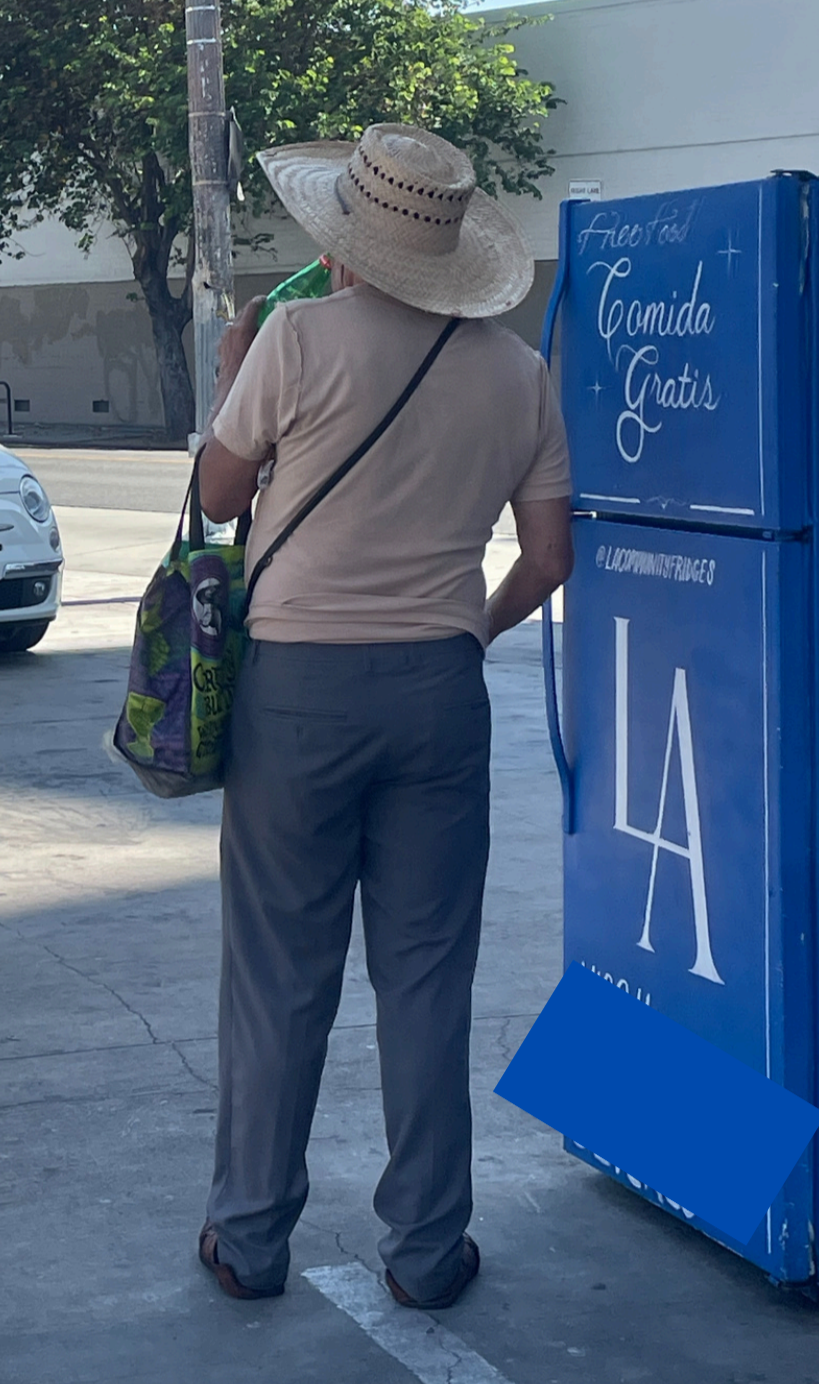Spatial Awareness - LA Food Bank
What happens when you challenge the belief that people experiencing food insecurity — especially unhoused individuals — "will eat anything?"
In 8 weeks, I transformed a local food bank's operational system by questioning their story positioning. The organization believed "food waste causes food insecurity, so waste reduction is our top priority,” a narrative that was putting distribution over dignity.
About The Organization
The food bank served quality hot meals and maintained relationships with unhoused community members who had specific dietary needs. But their community fridge — designed for ongoing food security — was stocked with degraded items based on the assumption that people experiencing food insecurity would accept any food.
Meanwhile, premium brands were hidden in back storage because staff didn't recognize their value, so paying customers unknowingly bought lower-quality items at the same price. The organization's dual mission of community support and waste reduction was creating operational inconsistencies. They couldn't see how conflating these goals was making both problems worse, not better.
My Approach:
Over 8 weeks working 4 hours per week (Thursdays and Sundays), I observed their whole-food distribution system.
They received overstock from premium grocery stores, and I implemented a system so it was distributed to community fridges 2 days later, a schedule designed to give people reliable access while maintaining smooth operations.
My work was particularly timely — the food bank had experienced a fire in July, creating an opportunity to reorganize their space and implement long-term systemic changes. Even working within temporary constraints, I could establish systems that would support the organization regardless of future circumstances.
My unique insight came from tracking what others weren't measuring: I counted premium brand turnover within 7-day periods, documented bags placed for compost versus actual waste, and observed customer satisfaction patterns. Most importantly, I noticed the organization held inconsistent beliefs depending on context: they maintained high standards for their direct meal programs while accepting degraded food for community fridges, not realizing this contradiction was undermining both goals.
The 30-40% reduction in food waste came from strategic spatial analysis: I tracked how produce location on shelves and proximity to ventilation affected spoilage rates. By reorganizing and systemizing the produce carts based on airflow patterns, we reduced how quickly food turned, decreased waste, and increased both customer consumption and satisfaction.
While others focused on pounds distributed and waste diverted, I focused on dignity patterns and choice availability. This revealed that their "waste reduction" success was actually creating waste — premium items going unnoticed while degraded food filled community fridges wasn't real access, it was abandonment dressed as charity.
Using my CUES framework, I identified the emotional through line between what the organization felt (urgency to distribute everything) and what their community felt (need for dignity and choice).
The positioning shift from "reduce waste" to "ensure quality access" drove measurable transformation.
“FOOD INSECURITY ISN’T JUST ABOUT ACCESS TO
ANY FOOD. IT’S ABOUT ACCESS TO QUALITY FOOD
THAT PROVIDES NUTRITION, RESPECTS DIGNITY,
AND ACKNOWLEDGES THAT EVERYONE HAS
PREFERENCES AND THE RIGHT TO CHOOSE.”
The Results:
People shifted from emergency meals to weekly food security, and quality food access became their operational standard, not the exception.
● 50% increase in premium brand consumption
● 70% increase in weekly food intake for clients
● 30-40% reduction in food waste
● +1 additional community fridge added




